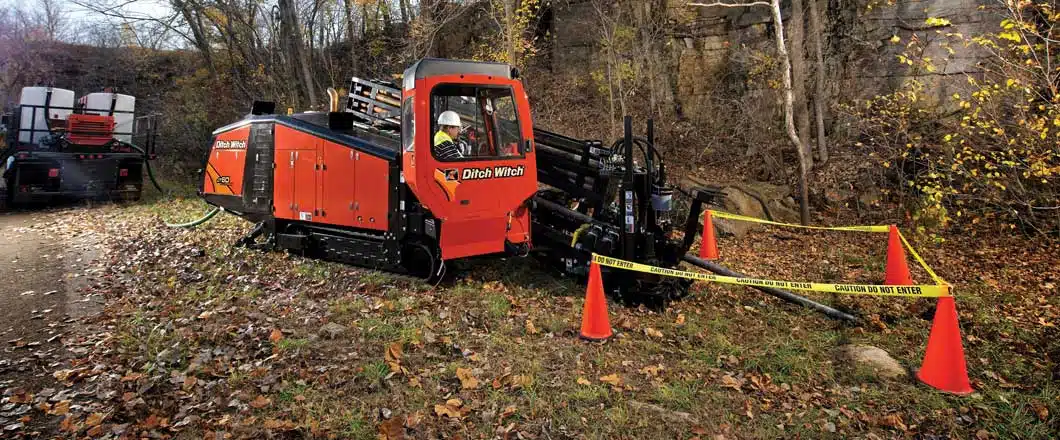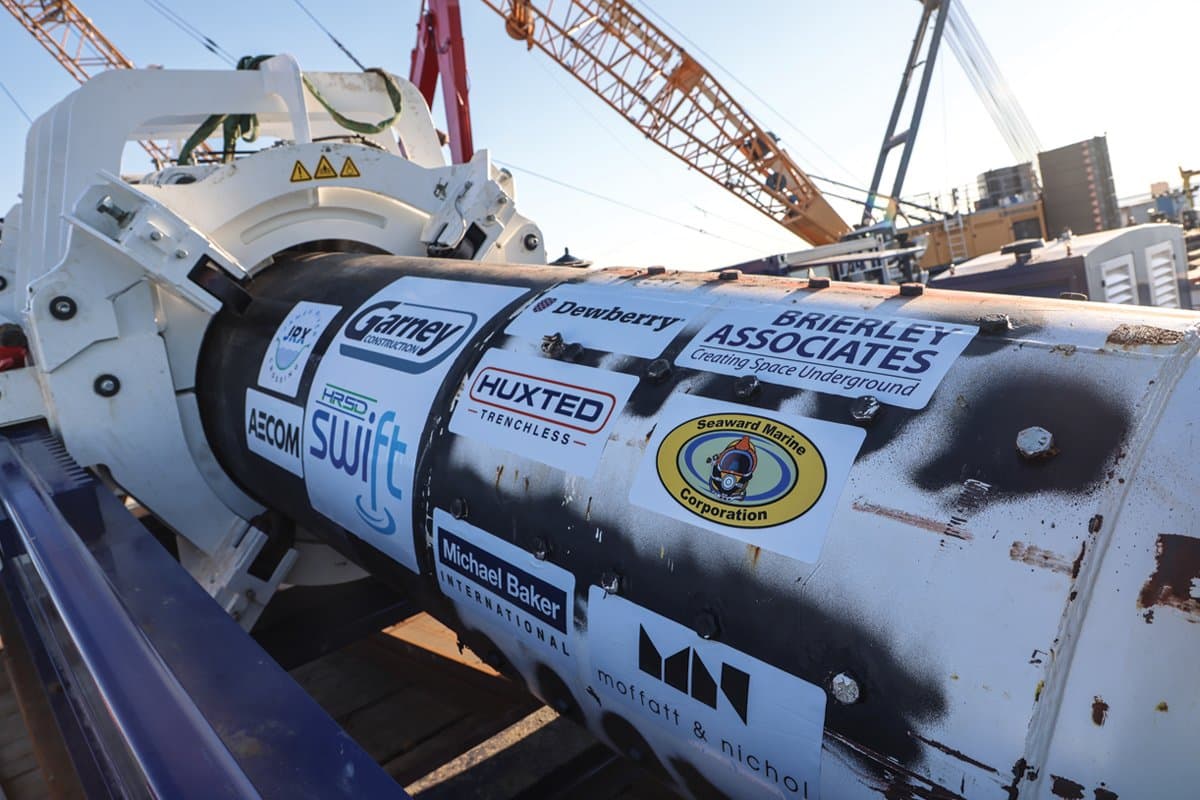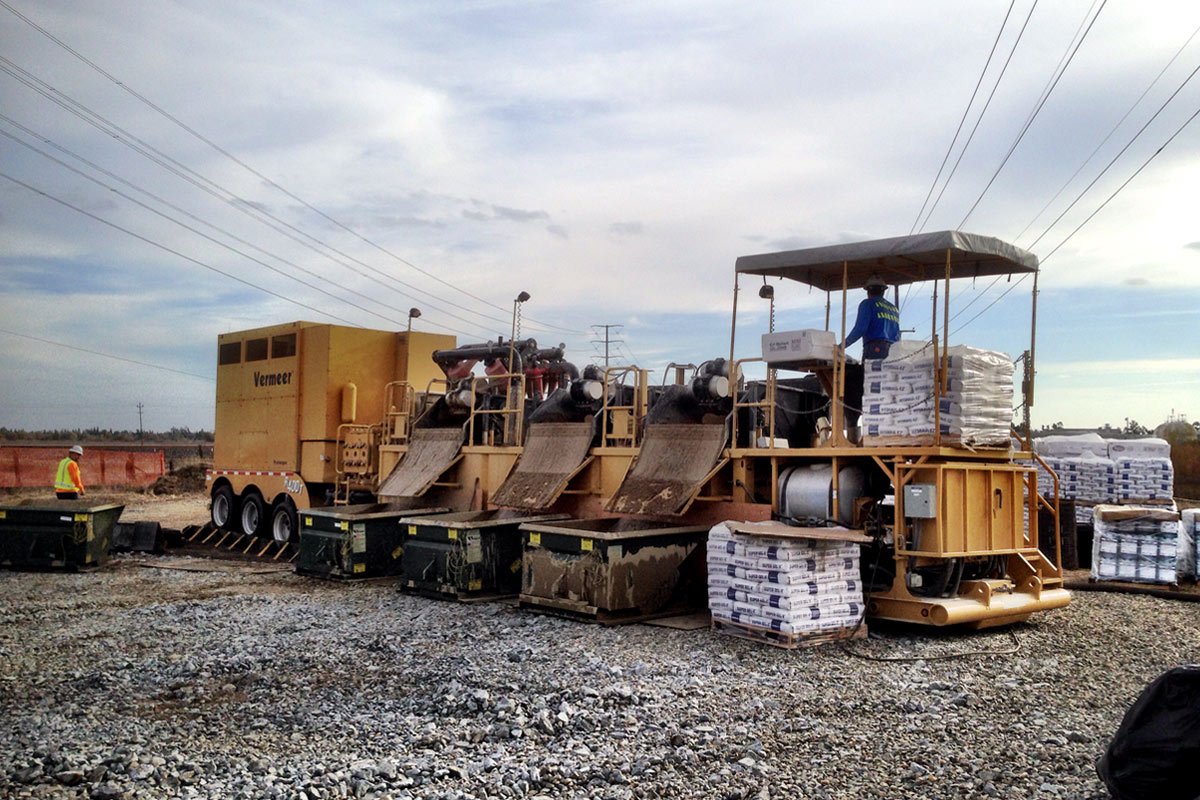
HDD to Benefit from PG&E’s Undergrounding Plans
Pacific Gas & Electric (PG&E) announced in July that it plans to initiate a multi-year effort to bury approximately 10,000 miles of power lines in fire-prone areas of Northern California. The announcement was welcome news to the horizontal directional drilling (HDD) industry, whose contractors, manufacturers and suppliers will benefit from the plans.
The utility — a combined natural gas and electric utility serving more than 16 million people across 70,000 sq miles in Northern and Central California — explained its decision in a July 21 press release, saying it will underground the electric distribution power lines in High Fire Threat Districts (HFTD) to further harden its system and help prevent the spread of wildfires. The move will also significantly reduce damage to the system and lessen the need for public safety power shutoffs. Today, the utility maintains more than 25,000 miles of overhead distribution power lines in the highest fire threat areas — which is more than 30 percent of its total distribution overhead system.
The utility’s plans were announced by PG&E CEO Patti Poppe, noting that this commitment represents the largest effort in the United States to underground power lines as a wildfire risk reduction measure. PG&E will reportedly spend $15 billion on the initiative. The news came shortly before the U.S. Senate approved a $1 trillion infrastructure bill, which included $73 billion to modernize the nation’s electrical grid.
RELATED: PG&E Commits to Undergrounding 10,000 Miles of Power Lines
What does this mean for the HDD industry? Though installing electric lines underground is an important segment of the HDD market, it hasn’t garnered the same attention as projects involving water, sewer, gas and/or fiber. We went to two of the top HDD rig manufacturers — Vermeer Corp. and Ditch Witch — for insight on what impact PG&E’s news will have on the HDD industry.
“As with any announcement like this one, time will tell how it will impact the HDD segment, but obviously, it’s good for HDD contractors and organizations that support their important work,” says Jerry Breyer, director of sales-infrastructure group at Vermeer Corp. “Also, due to geographical location and ground conditions where many of the PG&E’s lines are located, as well as the likely size of the transmission line bundles being installed, this project will likely require an extensive range of drill rig sizes.
“Perhaps more importantly, PG&E announcing a project of this scale tells everyone who works in HDD just how far the HDD industry has come. This type of project may have been considered impractical at the turn of the century,” Breyer adds.
“Business is already booming as 5G installation continues to be a priority but a large underground rollout like this will supply even more opportunity for business,” says Cory Maker, HDD project manager at Ditch Witch. “The PG&E project will also place a greater priority on workforce development. The industry is currently facing a workforce shortage, especially in regard to skilled workers, so a large project like this will highlight the importance of training programs.”
Maker adds, “Developments in today’s industry such as the latest infrastructure bill — which proposed to utilize $73 billion toward the power grid — are driving demand for electrical work forward. And as the industry progresses with new technology to make installation more efficient, we’ll see this segment grow further.”
RELATED: Celebrating HDD at 50
According to the PG&E’s release, historically, undergrounding has been done on a select, case-by-case basis and largely for reasons other than wildfire risk reduction. The release notes that due to breakthroughs the utility has made on undergrounding projects in recent years, undergrounding can now play a much more prominent role in its ongoing efforts to harden the electric grid. Following devastating 2017 northern California wildfires and the 2018 Camp Fire, PG&E began to evaluate placing the overhead power lines underground as a wildfire safety measure and better understand the construction and costs associated with undergrounding for system purposes.
And while PG&E’s announced plans is welcome news, Maker and Breyer note that installing power lines underground has been a growing segment of the HDD market for some time. “It’s been common to bury distribution electrical for a long time, but some challenges go along with burying larger transmission lines, for various reasons,” Breyer says. “In recent years, there has been advances in the design and engineering of underground cables and placement, which is one of the reasons we’re seeing more of this type of work being down now.”
“Today, we’re seeing a huge swing in underground electrical installation due to natural disasters like hurricanes, earthquakes and fires, among other factors,” notes Maker. “Placing electrical utilities underground allows them to maintain power in certain situations and restore power much quicker should an outage occur.”
Also of note is that the proposed PG&E work will take place in a heavily, forested area of Northern California, making it perfect for the HDD application as minimal disturbance to the environment and traffic are its key features. The terrain will necessitate that HDD contractors will likely use larger drill rigs for the work vs. the smaller rigs (usually 40,000 lbs or smaller).
“California jobsites have a wide variety of ground conditions, including hard rock and the actual installation will be, at least in part, through rugged, mountainous regions,” Maker says. “These jobsite conditions offer HDD an opportunity to show off how advanced modern machines are.”
Maker adds that the rigs used will vary in size due bore lengths, as well as terrain and soil conditions. And while most underground electrical work is done using the smaller rigs, in the more dense, forested areas for this project, contractors will turn to larger rigs to do longer bores to avoid multiple setups and minimize any disturbances, he says.
Breyer concurs, noting the rigs for the PG&E program will likely be in the 100,000 to 200,000-lb range; in some cases, rigs up to 500,000 lbs could be used.

PG&E implemented a few pilot projects since the 2017 and 2018 wildfires, aimed at converting overhead power lines to underground in high fire-threat area of Alameda, Contra Costs, Nevada and Sonoma counties, the release says. As part of the rebuild efforts following the October 2017 northern California wildfires, the utility completed undergrounding eight miles of power lines in Sonoma County communities. In 2019, PG&E announced it would rebuild all its power lines underground in the Town of Paradise, a community impacted by the Camp Fire.
RELATED: Inaugural Bob Westphal Memorial Scholarships Winners Announced
These pilot projects enabled PG&E to refine the construction and cost requirements associated with targeting undergrounding, allowing for the acceleration and expansion of future undergrounding projects. “Although installing or relocating overhead electric lines underground can be costly, the increased expense and labor involved in maintaining and repairing overhead lines can add up over time,” Breyer says. “This has utility companies reevaluating their infrastructure and many are deciding that the initial costs are worth it because the maintenance costs can be substantially less with underground lines. They can also provide reliable service since the lines are less impacted by weather or other hazards, which can deliver a better customer service.”
Maker and Breyer both say the HDD industry is up for the projected new work coming its way. Critical to that end is also dealing with an ongoing labor shortage, which was further impacted by the ongoing COVID-19 pandemic.
“Supporting a large project like this will be a challenge for everyone involved, including utility companies, contractors, dealers and manufacturers,” says Breyer. “But through diligent planning and communicating needs and expectations to everyone involved, projects of this scale are possible.”
Maker notes that the parts and labor shortages affecting the underground construction industry continue to impact the HDD industry and manufacturers are looking for ways to support contractors dealing with those challenges, through increased training opportunities, for example. “The shortage of skilled operators that can go out to the jobsite, locate utilities and drill is perhaps the biggest industry issue today,” he says, explaining that manufacturers offer online training options and simulators for simple and affordable learning options. There are others out there, as well, such as Utility Systems Technician Program at the State Technical College of Missouri.
Sharon M. Bueno is managing editor of Trenchless Technology.




